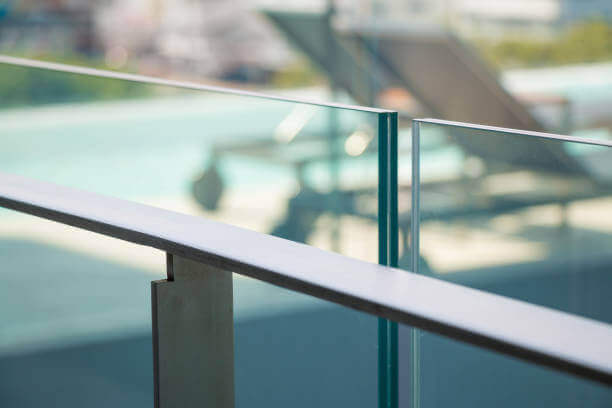In 2019 Legislation was passed through the Victorian Parliament that increased safety measures for domestic pools and spas within the state. These legislative changes came into effect as of December 1st, 2019, and there are consequences for pool and spa owners who do not remain compliant.
Council can issue fines from $300.00 to upward of $1,600.00+ to pool and spa owners for various reasons of non-compliance. However, when it comes to swimming pool safety, receiving a fine is the least devastating consequence when considering what could happen if your pool fence or barrier is not compliant.
According to the Royal Life Saving Summer Drowning Report 2020-21, drownings have increased by 30% in Australian waterways, domestic pools, and beaches. Adults and children alike have had less opportunity to develop strong swimming skills in recent times, making it more important than ever to prioritise water safety.
When is a pool fence required?
If you have a pool or spa on your property, you need a safety-compliant pool barrier. But what if it’s just a temporary pool or inflatable paddle pool? Are there different regulations for spas compared to pools?
There are, in fact, consistencies across spas, pools and temporary pools:
- If there is at least 30cm of water depth, it requires a safety-compliant pool fence
- All spa and pool fencing needs to adhere to Australian Standard AS1926-2012.
- Fences must be at least 1.2m tall
- Gates must be self-closing and self-latching
- The gate latch must stand 1.5m above the ground
- Your gate must also swing away from your pool or spa and out of the enclosure
- Pool and spa areas must adhere to Non-Climbable Zones (NCZ)
All pools and spas must also be registered with your local council immediately. If your pool or spa is not registered, you may be issued a minimum fine of $365.00 by your council.
You can read more about spa fencing here and pool fence regulations here.

How do you know if your pool fence or barrier is compliant?
Whether you install the pool fence yourself or have a professional install it, you will need to follow the Australian standards and have a safety certificate issued. To avoid possible fines, it is essential to ensure your fence meets all criteria before a safety inspector does an assessment.
But before you rush to have a safety inspector come out to your property, we recommend having an evaluation with one of our Pre-Compliance Consultants first. Having a pre-compliance consultation can save you from receiving a fine, and we can also tell you precisely what you need to do to get your pool fence or barrier up to standard.

What’s the difference between a pre-compliance consultation and a safety evaluation?
Unlike safety inspectors, a pre-compliance consultant is not lawfully obligated to report your pool fence if it does not meet safety standards. However, a pre-compliance consultation will cover all the same criteria as a safety evaluation. The purpose is to help you identify non-compliant items and how you can correct them.
When we conduct a pre-compliance consultation, we provide recommendations and advice on rectifications to ensure your fence will pass the safety evaluation. In our experience so far, we have found that less than 1% of current pool barriers are ready for a safety evaluation. Read more about our guarantee and consultation fee refund policy.
An advantage of having a pre-compliance consultation is that you are not given a specific timeframe or deadline to complete the rectifications. However, by law, you must have your pool or sp (or both) registered with the council and a safety certificate issued for a compliant pool fence or barrier. So it is critical that rectifications are complete and a safety evaluation conducted promptly.

What happens when a pool fence fails the safety inspection?
If you choose to go directly to your safety compliance inspection, but your fence fails safety standards, your council could be notified if improvement deadlines imposed by the inspector are not met. Council involvement will result in possible multiple fines if you cannot meet deadlines to correct non-compliant items.
When a pool fence or barrier fails a compliance inspection, the inspector is obliged under the Victorian Building Act to issue a 147G Improvement Notice or a Form 24 NON-Compliance Notice.
While the notice will list the breaches, it will only allow from 7 to 60 days for rectification which means you suddenly have deadlines to bring your pool fence up to standard. If you don’t meet the deadline, your Council is obligated to act by issuing fines starting at $300.00. Avoid fines and penalties from your council and unnecessary time pressures by having a pre-compliance consultation.

What fines do you risk with a non-compliant fence?
If a safety inspector deems your pool fence non-compliant, they are obligated to lodge a certificate of non-compliance with your Council immediately. From there, you may face a series of fines, depending on the action you take.
Fines include:
- After the inspector lodges the certificate of non-compliance, your Council will issue you a maximum fee of $385.10 with no less than 28 days to pay.
- If you fail to pay the fee by the due date, you may be issued with an on-the-spot fine of $300 and an additional penalty up to $1,652.20.
- Your inspector will also provide a Barrier Improvement Notice with a specified time period for you to complete rectifications. If you do not comply with the Barrier Improvement Notice, you may be issued an on-the-spot fine of $300 and an additional penalty up to $1,652.20.
It is important to note that you must lodge it with your council before the due date if you receive a certificate of Pool and Spa Compliance. Failure to lodge a safety compliance certificate can result in an on-the-spot fine of $300 and an additional penalty up to $1,652.20.
Don’t get caught out with a non-compliant fence. Instead, book a pre-compliance consultation with our team and ensure your pool fence is up to standard.
